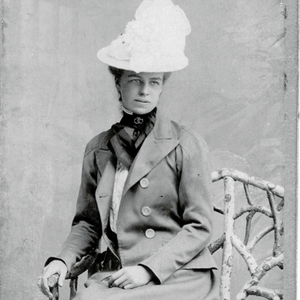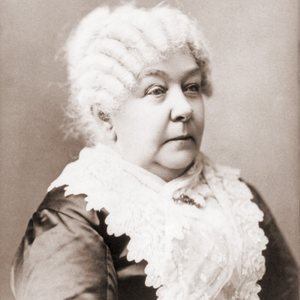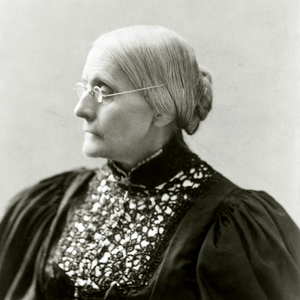Susan B. Anthony
Although Susan B. Anthony was born in Adams, Massachusetts, her family moved to New York at the young age of five, where she would grow to become a well-known influence and legacy for both the women’s suffrage movement and the abolitionist movement.
Anthony began her early career in 1951 and 1952 by attending an anti-slavery convention and soon after, a women’s rights convention that kickstarted her tour down the east coast, where she would travel alone to publicly speak at various historical landmarks. Her fight for freedom and rights was accompanied by campaigns such as the anti-slavery campaign, “No Union with Slaveholders. No Compromise.”, her petitions to women’s property rights, her aid in writing the ‘Appeal to the Women of the Republic’, her fight to publish across the media and press to raise awareness and gain the support of the women’s suffrage movement, her selfless act of pledging the value of her life insurance finances to The University of Rochester to ensure that women could gain admission to higher education, and a myriad of other astounding accomplishments that fueled the change behind these movements in the mid-1900s.
Just 14 years after Susan B. Anthony’s passing on March 13, 1906, her legacy continued to live on as the 19th Amendment to the U.S. Constitution, also known as the Susan B. Anthony Amendment grants all U.S. women age 21 and over the right to vote.

Eleanor Roosevelt
Born in New York City on October 11, 1884, Anna Eleanor Roosevelt would not know until later in her life that she would be one of the most renowned 20th-century female civil rights activists of her time. Mrs. Roosevelt grew up to be the First Lady of the Whitehouse, a politician, diplomat, and activist, where her reputation for kindness and integrity were admired by many. As she greeted thousands of people with a friendly charm, she ensured her voice was heard and used her platform to establish change for women in the workplace. Whether Eleanor was speaking in person, talking on the radio to a faceless audience, or candidly reporting her opinions in a weekly newspaper column, she was a well-respected woman with purpose and loyalty for her work as a social feminist.
Mrs. Roosevelt began her career in the 1920s when she became a prominent leading role in several feminist groups. These groups include; the League of Women Voters, the Women’s Trade Union League (WTUL), the Women’s Division of the New York State Democratic Committee, and the Women’s City Club. Here, much of her work focused on being the voice for women in poverty or the working class while protecting women’s rights in the workplace.
Later in 1932, when she became the First Lady to President Theodore Roosevelt, she recognized her power to improve the unjust political system was even greater. During her four-year tenure as First Lady, she became highly involved in the “she-she-she camps,” or women’s organizations of the Civilian Conservation Corps (CCC), as part of the New Deal program following the post-effects of the Great Depression. The “she-she-she-camps” was a counterpart to the CCC program originally curated to support unemployed men only. This significant Temporary Emergency Relief Aid would support thousands of unemployed women and focus on women’s need for healing, education, and relaxation – improving the mental well-being of young women by adding daily structure following the detriments of World War II.
Roosevelt continued her advocacy to improve the conditions for female working professionals and politicians all the way up until her passing on November 7, 1962, where her legacy would live on forever.

Elizabeth Cady Stanton
Interestingly, Stanton gained her education in the local Albany, New York area, at Emma Willard’s Troy Female Seminary, where she began her formal studies and later became a significant, well-educated female activist across the state, all while living in her Albany, NY home.
Born in Johnstown, New York in 1815, Elizabeth Cady Stanton was surrounded by the conversation of legal affairs throughout the entirety of her childhood, as her father was a New York State assembly member, ultimately providing Elizabeth with an informal education that led her to her great passion for female representation in legislative roles and policy. Not only did she fight for women’s rights throughout her political career, but she also married abolitionist lecturer, Henry Stanton, where she would also dedicate a large portion of her career toward anti-slavery conventions and anti-slavery advocacy.
With the women’s suffrage movement remaining at the top of her career priorities, in connection to Susan B. Anthony, she and Anthony would work alongside one another to write and deliver powerful speeches that brought feminist policy capabilities to thousands. Together the two women would organize their own Women’s Rights Convention and create a group called the Women’s Loyal National League. These large projects resulted in the collection of 40,000 signatures to petition the 13th amendment, helping the fight to end slavery in the United States. Their dynamic efforts to fight for American rights did not stop there. For over two decades, the two women worked together, building and speaking to Senators of congress on behalf of their founded National American Woman Suffrage Association to create buzz and eventually become the pillars of the enactment for women’s right to vote.
Individually, Stanton traveled nationwide to deliver her “Our Girls” speech that urged young women to pursue an education and advance their chances to retrieve incomes of their own. This speech was translated into her final speech before her passing in 1902.

Sojourner Truth
Born in Ulster County, New York in 1797, Sojourner Truth was a truly remarkable woman whose legacy tells the raw truths behind the inequalities that African Americans faced during the heart-wrenching times of legal slavery and how she worked a lifetime to become the face and voice of African Americans fight for freedom throughout her career.
Truth was bought and sold into slavery four times since birth before becoming a well-known, determined advocate for abolition, temperance, and civil and women’s rights. Truth showed bravery throughout her entire life, as she began her career by running away from her master’s unkept promise to uphold the New York State Anti-Slavery Law of 1827. Soon after her escape, she grew to be one of the largest advocates for the anti-slavery movement and women’s rights movement of her time. She delivered the speech “Ain’t I A Woman”, and continued to deliver speeches and attend conventions during and after the Civil War.
Truth later had an autobiography written about herself and her accomplishments, where she thrived on the success of her book sales and simultaneously gained admiration for revealing her background. However, her career did not end after selling her books. After moving to Michigan in the 1850s, Truth continued her work by helping slaves escape to freedom. She also urged young African American men to join union causes in aid of black troops, which led her to an invitation to the white house where she continued to lobby against segregation. With a lifetime of incredible work, three beautiful daughters, and a home in Michigan, Sojourner Truth passed away from old age in 1883.

